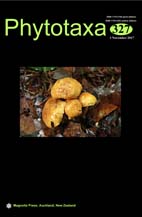Abstract
The tribe Hylocereeae are represented by mainly Central American-Mexican epiphytic, hemi-epiphytic and climbing cacti. They are popular due to their spectacular nocturnal flowers and have some importance as crops grown for their edible fruits. We present the first comprehensive phylogenetic study of the Hylocereeae sampling 60 out of the 63 currently accepted species and 17 out of 19 infraspecific taxa. Based on four plastid regions (trnK/matK, the rpl16 intron, rps3-rpl16, and trnL-F) we find a highly supported core Hylocereeae clade that also includes Acanthocereus and Peniocereus p.p., while Strophocactus is depicted as polyphyletic and is resolved outside of the Hylocereeae tribe. The clades found within Hylocereeae agree, in general terms, with the currently accepted genera but none of the genera are entirely monophyletic in their current circumscription. A new concept for the Hylocereeae is presented to include the genera Acanthocereus (incl. Peniocereus p.p.), Aporocactus, Disocactus, Epiphyllum, Selenicereus (incl. Hylocereus and Weberocereus p.p.), Pseudorhipsalis, Kimnachia gen. nov., and Weberocereus. New nomenclatural combinations are provided to make these genera monophyletic. The genus Deamia is reinstated for Strophocactus testudo and S. chontalensis, while Strophocactus is newly circumscribed to include S. wittii, Pseudoacanthocereus brasiliensis, and P. sicariguensis. Both genera are excluded from Hylocereeae. A taxonomic synopsis of Hylocereeae is provided.

